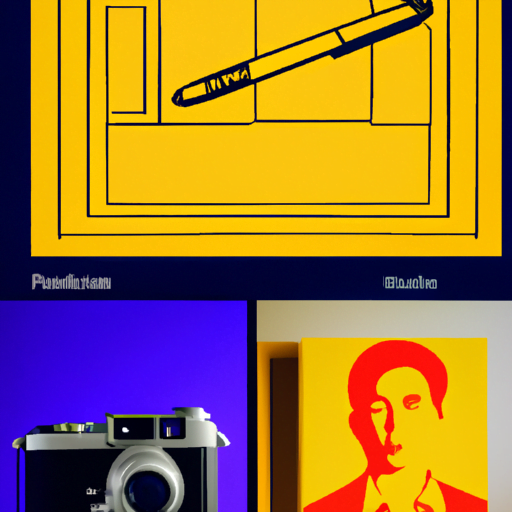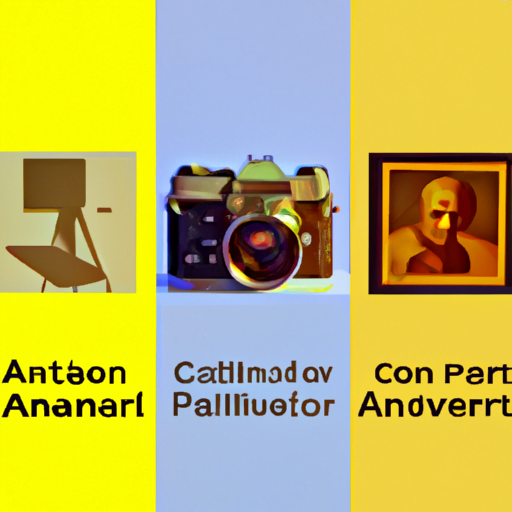
-
Table of Contents
The Evolution of Graphic Design: From Past to Present

Graphic design is a constantly evolving field that has undergone significant changes over the years. From its humble beginnings in ancient civilizations to the digital age we live in today, graphic design has played a crucial role in shaping the way we communicate and perceive information. In this article, we will explore the fascinating journey of graphic design, from its origins to its current state, and examine the key milestones and trends that have shaped its evolution.
The Origins of Graphic Design
Graphic design can be traced back to the earliest forms of human communication. In ancient civilizations such as Egypt and Mesopotamia, graphic elements were used to convey messages and tell stories. Hieroglyphics, for example, were pictorial symbols that represented words or sounds. These early forms of visual communication laid the foundation for the development of graphic design as we know it today.
Fast forward to the Middle Ages, and we see the emergence of illuminated manuscripts. These beautifully crafted books featured intricate illustrations and decorative elements, showcasing the artistic skills of scribes and illuminators. The use of typography also began to gain prominence during this period, with the invention of movable type by Johannes Gutenberg in the 15th century.
The Birth of Modern Graphic Design
The Industrial Revolution in the 18th and 19th centuries brought about significant changes in society, technology, and communication. This period marked the birth of modern graphic design, as new printing techniques and mass production methods made it possible to create visually appealing and informative designs on a larger scale.
One of the key figures in the development of modern graphic design was William Morris. Morris was a British designer, artist, and writer who believed in the importance of combining art and craftsmanship. He founded the Arts and Crafts Movement, which aimed to revive traditional craftsmanship and promote the use of high-quality materials in design.
Another influential figure in the history of graphic design is the Swiss designer, Josef Müller-Brockmann. Müller-Brockmann was a pioneer of the Swiss Style, also known as the International Typographic Style. This design movement emphasized simplicity, clarity, and objectivity, with a focus on grid-based layouts and sans-serif typography. The Swiss Style had a profound impact on graphic design, influencing designers around the world and shaping the modernist aesthetic.
The Digital Revolution and Beyond
The advent of computers and digital technology in the late 20th century revolutionized the field of graphic design. The introduction of desktop publishing software and digital design tools made it easier for designers to create and manipulate visual elements. This shift from traditional to digital design opened up new possibilities and expanded the scope of graphic design.
One of the most significant developments in recent years is the rise of user experience (UX) design. UX design focuses on creating meaningful and enjoyable experiences for users by considering their needs, behaviors, and emotions. With the increasing importance of digital interfaces and interactive design, UX design has become an integral part of the graphic design process.
Another trend that has emerged in the digital age is the use of data visualization in graphic design. Data visualization involves presenting complex information in a visual format, making it easier to understand and interpret. Infographics, for example, combine text, images, and charts to convey data in a visually appealing and accessible way.
Case Studies: Evolution in Action
Let’s take a closer look at two case studies that illustrate the evolution of graphic design in practice:
Case Study 1: Coca-Cola
Coca-Cola is a brand that has undergone numerous design changes throughout its history. From its early logo featuring elaborate script typography to the iconic red and white logo we know today, Coca-Cola’s design evolution reflects the changing trends and cultural shifts of each era. The brand has successfully adapted its visual identity to stay relevant and appeal to a global audience.
Case Study 2: Apple
Apple is another brand that has embraced the principles of minimalist design and simplicity. From the clean lines of its product packaging to the intuitive user interfaces of its devices, Apple’s design philosophy is centered around creating a seamless and enjoyable user experience. The company’s design evolution has played a significant role in establishing its brand identity and setting it apart from competitors.
The Future of Graphic Design
As technology continues to advance and new design trends emerge, the future of graphic design looks promising. Here are some key trends and areas of growth to watch out for:
- Responsive design: With the increasing use of mobile devices, responsive design has become essential. Designers need to create designs that adapt to different screen sizes and devices.
- Augmented reality (AR) and virtual reality (VR): AR and VR technologies are opening up new possibilities for immersive and interactive design experiences.
- Artificial intelligence (AI): AI-powered design tools can automate repetitive tasks and assist designers in creating more efficient and personalized designs.
- Sustainability and ethical design: As environmental concerns become more prominent, designers are focusing on creating sustainable and socially responsible designs.
Summary
Graphic design has come a long way since its origins in ancient civilizations. From hieroglyphics to illuminated manuscripts, from the Swiss Style to digital design, the evolution of graphic design reflects the changing needs and technologies of each era. The digital revolution has opened up new possibilities and expanded the scope of graphic design, with trends such as UX design and data visualization shaping the field. Brands like Coca-Cola and Apple have demonstrated the power of design in creating a strong brand identity. As we look to the future, responsive design, AR/VR, AI, and sustainability will continue to drive the evolution of graphic design. The journey of graphic design is far from over, and we can expect exciting developments and innovations in the years to come.
